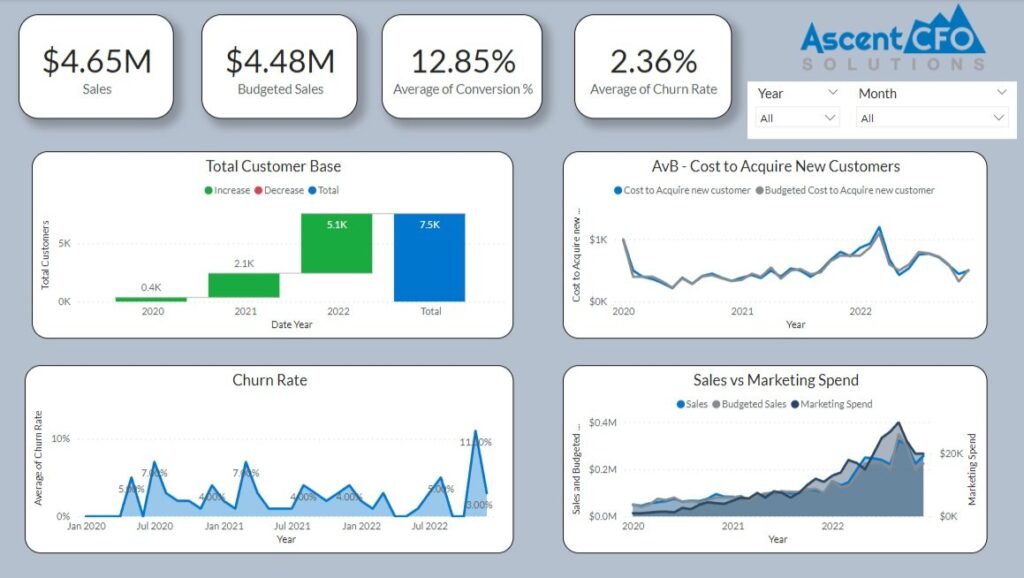5 Common Icebergs An Experienced CFO Can Help High-Growth Firms Avoid
By Matt Kelly
While navigating through times of rapid growth and expansion, businesses often encounter specific challenges that can sink the ship if not recognized and avoided. An experienced CFO can help businesses identify and steer clear of these hidden dangers, helping to ensure smoother sailing to financial success.
As someone who has spent 15 years in finance roles at Fortune 150 companies and another 12 years as a CFO for high-growth firms, I specialize in leading organizations through various phases of growth, circumventing the pains and risks that commonly go along with them. Whether with a VC-funded, PE-backed, or Founder-owned firm, many of the same challenges present themselves. Here are some of the most frequently encountered:
Ensuring the basics of your company organization are seaworthy – before getting too far from shore
Many companies are founded quite simply. Understandably most of the initial efforts are spent refining the product and GTM strategy and there is rarely much time or money spent setting up a detailed legal structure. Many times they register their trade name, get an EIN, draft up brief Articles of Incorporation and ownership documents and set off to build a business.
However, as soon as possible, a detailed legal and risk review should take place. Owners must know exactly who owns what- both profits and losses. Companies need to walk through multiple future scenarios and know exactly what happens in each case. Who gets what from a prosperous future sale? How would those gains be taxed? What about liabilities from a large lawsuit? What classes of stock will be utilized in the operating agreement, and what rights will each class have as far as participation rights, anti-dilution provisions, voting rights, etc.
Experienced CFO’s can lead this review, in tandem with good corporate counsel. We’ve seen relationships between founding partners become strained and these legal structures tested. We’ve helped design deal terms to optimize, not gross, but net gains. We’ve seen a potential sale threatened due to a seemingly innocuous document that in fact threatened the entire S-Corp status. We’ve quickly set up insurance to cover major liability gaps. We’ve even helped founders close loopholes that would have allowed them to be voted out of their own companies.
Constant assessment of your crew – ensure you always have the right talent onboard for each stage of the company’s journey
Conditions change very rapidly at growing companies. The skills required to perform a position successfully one year may totally change the next. Often companies begin as a small group of individual contributors, all hacking and hustling to get the company to viability. The next year those same mavericks may be struggling to manage teams of employees or to build documented processes.
Thorough financial and resource planning can help identify these skill set necessities before they arrive. In some cases, upskilling can take place in advance to help resources adapt and grow into those new sets of challenges. In other cases, new resources can be targeted with experience in those next phases of planned growth.
Speaking of Crew – Make sure your Accounting & Finance function isn’t malnourished
Don’t get too far into your journey before building out your top-tier Accounting & Finance function.
It is very common for businesses to neglect Finance and Accounting in their early phases. And most times they get away with it, as basic bookkeeping and simple cash management suffices while you are busy proving your concept and fighting your way to profitability.
But when you have reached the point where the business is expanding rapidly and many employees are now depending on it for their livelihood, it is time to ensure the growth and health of the company are sustained.
A strong Finance and Accounting practice brings organized and GAAP compliant accounting. It includes thoughtful planning, timely reporting, and insightful analytics. It ensures solvency through strong financial controls and cash planning and management.
It can be difficult to determine a specific amount or percent of Revenues to spend to achieve a healthy Accounting & Finance function. This depends largely on the size and complexity of the organization.
So examine your own situation. If it feels like you don’t have clarity of your results, if you don’t have solid planning and focused direction, then you likely have under-invested in your Finance and Accounting function. And know that this doesn’t have to break the bank. If your business is not large enough to require or afford a full-time CFO, by all means enlist one on a fractional basis.
Don’t sink the boat with too much cargo – when too much success can lead to serious threats
In the early stages of a company, much of the focus is (rightfully) placed primarily on product development and sales. However, when traction starts to occur at scale, this poses a number of very real risks to the entire business if not properly planned for.
Obvious is the burden on cash. Most businesses will experience a major cash pinch in times of rapid sales growth. An experienced CFO will help you plan ahead of time for the proper amount of growth capital required if you hit or exceed your plan. And they can help you secure it most cost-effectively.
Also common are difficulties in producing or implementing your product at true scale. Oftentimes smaller organizations are running on highly manual and minimally documented procedures for the production or delivery of their products. These quickly fracture when attempting to be run at scale. A detailed planning process helps each department know about the desired growth for a coming year and then thoughtfully plan for proper resources required to achieve those goals.
Sometimes this is additional tech infrastructure. Other times it is planned investment in Operational or Procedural process improvements. A good CFO will lead the planning process to identify and address these risks in advance of your rapid success.
Focus on the Destination
Consideration of your ultimate goal is crucial. Is there a desired sale or transition plan in the future? In how long and to whom? Maybe you plan to transition the business to a family member, or slowly sell chunks of equity to employees. Perhaps the plan is to sell to a strategic buyer, to a PE firm or to go public. All of these destinations require different paths. Your legal structure, organization of your documents, your preparation for diligence and legal pre-work can all be charted out well in advance, optimized for your specific desired outcome.
In the vast ocean of business challenges, an experienced CFO can be a valuable member to have onboard. They will collaborate with your leadership team to thoughtfully plot the course and they can lean on their experience to confidently navigate the way around these, and many other potentially hazardous icebergs. Wishing you smooth sailing!














